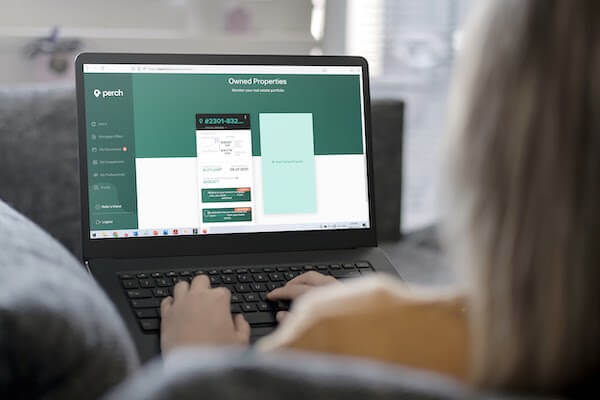Buying a home is a major accomplishment that should always be celebrated. Yet once the shine of the SOLD sign wears off and you actually step inside your new home, you may notice there’s a lot of work to be done. If you’re feeling strapped for cash after purchasing a home, don’t worry, there are still ways to afford the necessary renovations. One way is to add money to your current mortgage to help you pay for these renovations. To better understand this process, HomeStars reached out to Alex Leduc, CEO & Principal Broker of Perch to find out more.
1. What are some pros and cons of homeowners adjusting their mortgage to pay for home renovations?
There are many benefits to this process, according to Alex. One big pro is the lower cost of financing. For example, a mortgage refinance offers rates of around 2.50% (accurate at the time of publication, click here for the latest rates). This is compared to a line of credit, HELOC or personal loan providers, which have rates as high as 7% to 19%. Even if you do have the cash on hand, you could be better off using that money to invest in stocks, as opposed to paying out of pocket for the project. This way your money can help you make more money while your mortgage helps you complete your projects.
However, there are still some cons to consider. For one, you are taking on more debt, as opposed to saving up the money to pay for your home improvements. This means a longer period of time before you can officially declare yourself mortgage-free and inevitably you pay more interest. Also, in order for this process to work, you need to apply for a mortgage. This means going through the application process again and paying for any associated fees, such as a prepayment penalty for breaking your mortgage term early, or legal fees.
2. What are some ways to pay for a home renovation project in Canada?
The good news is that there are many ways to go about this process. Alex put this handy chart together to help homeowners find the best option for them.
| How It Works | Cost of Borrowing* | |
| Mortgage Refinance | You use the equity in your property to increase your mortgage loan amount. Equity is the difference between what you owe on your mortgage and what your home is currently worth. | Around 2.50% |
| Line of Credit | A line of credit is a flexible loan from a bank that consists of a predefined amount of money that you can access as needed, and repay either immediately or over time. | Around 8% |
| HELOC (Home equity line of credit) | A HELOC is a secured form of credit. The lender uses your home as a guarantee that you’ll pay back the money you borrow. | 3-4% |
| Credit Card | When you use your credit card to make a purchase or pay a bill or supplier, you have an interest-free grace period, typically 21 days or more from the date on your credit card statement. After the grace period has elapsed, you incur interest charges until you have repaid the amount you borrowed. | Around 19% |
| Personal Loan | A type of loan offered at the point-of-sale by businesses, which allows you to make smaller monthly, bi-weekly, or weekly payments. | 6.99% – 29.99% |
*Rates are accurate at the time this article was published.
3. How do homeowners have this conversation with their bank? What’s the correct terminology to use and what information should they have prepared?

Alex notes that knowing what to ask and using the right terms will make your process easier. Specifically what you should say is, “I’m looking to refinance my property and take out funds to do some renovations.” This is also sometimes known as an “equity take out.”
Before you go to your bank, you should know which renovations you want to get done and roughly how much they will cost. This will help figure out how much money you need to add to your mortgage. Be sure to reach out to a few pros and get quotes. You can also refer to HomeStars’ Cost Guides as a starting point.
4. Walk us through a step-by-step process. What is the order of operations?
The process of refinancing is similar to the mortgage application process you went through when you initially bought your property, except you’re not making a new purchase. A trusted mortgage advisor can help you strategize and figure out what path is the most financially beneficial for you.
If you’re an existing homeowner and already have a mortgage:
- Speak to your current lender. Find out if it’s possible to break your mortgage and what the associated costs would be. Ideally, they may even be able to help you with the refinance itself to retain you as a client.
- Next, contact your mortgage advisor and let them know you’re looking to refinance. They’ll be able to calculate the maximum amount of funds you can draw from your home equity, and go over what mortgage offers you’re eligible for. If your existing lender gave you an offer, your mortgage advisor can help you review how competitive it is.
- You’ll work with your mortgage advisor to submit an application to the lender.
- The lender will review your application and provide a conditional approval.
- Next, you’ll need to provide proof of income, existing mortgage details and property tax information. This is where having documents ahead of time, like pay stubs and bank statements, will make things easier.
- The lender may request an appraisal, depending on the property value and size of the new mortgage.
- Once all conditions have been met, the lender will release funds to you through your lawyer.
If you are about to purchase and in the process of getting a mortgage:
Lenders offer the ability to improve certain features of a home before you close the mortgage by up to $40k or 10% of the purchase price, whichever is lower. A lender will typically ask for a quote to support the requested improvements to the home before deciding to lend you a higher mortgage amount. Under this type of mortgage, you will need to pay for the renovations up-front and the lender will rebate you for the agreed-upon renovations after the work has been completed.
- Contact your mortgage advisor and let them know you’re looking for a Purchase Plus Improvements mortgage. They’ll be able to go over what mortgage offers you’re eligible for.
- You’ll work with your mortgage advisor to submit an application to the lender.
- The lender will review your application and provide conditional approval. These conditions will include documents like your proof of income or bank statements, along with two quotes for the requested improvements. You’ll also need to complete an appraisal that confirms the current value of the property, and the expected value after the improvements have been completed.
- Once all conditions have been met, the lender will release funds to your lawyer. The portion of funds going towards the improvements will be held back in trust with your lawyer until you’re able to provide proof of completion of the renovations.
5. Roughly how long does it take to get a new mortgage?
Alex explains that a lender will typically provide a conditional approval within 48 hours, and will require 10 to 15 business days to complete the entire mortgage process from start to finish. This timeline is also dependent on how quickly you can meet the lender’s conditions, such as providing requested documents like proof of income or your bank statements. Your mortgage advisor will be able to give you an accurate turnaround time since they are in close contact with your lender and will be aware of any extenuating circumstances.
Know Your Options

Now that you have a better understanding of what your options are and how to talk about them, your next step is to decide on the best option for your home. Do you need to do some urgent foundational work, or can you wait to save a bit of money to add a new bathroom? The urgency of your projects can help you decide what can be done today and what can wait.
If you’re curious about current mortgage refinance rates, be sure to check out the Perch Pathfinder to instantly view your personalized offers. Then, you can check out our Canadian Cost Guides to help you set a realistic budget for your projects. Whether you’re a first-time homebuyer or have owned a few homes before, remember that using your mortgage is an affordable way to improve the value of your home without touching your savings. Consider which option is best for you and get started on improving your home, today!
